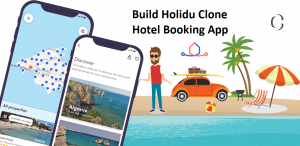An Ultimate Guide to Developing a Successful Ed-tech Website/App Step #5: Monetize Your Product

Monetization is the process of transforming your assets into any form of legal tender. Drafting a monetization strategy for your Ed-tech startup is extremely important to earn profit in a long way. As ideas worth nothing if they can’t generate revenue.
Let’s get deeper into understanding the importance of having a clear monetization strategy before you go broke.
Benefits of having a monetization plan for your ed-tech startup:
- Giving priority to the monetization plan will complement your business strategy and enable you to sustain your venture.
- Having a well-thought and comprehensive monetization strategy will attract Venture Capitalists. We are living in a world where technology and experience are continually evolving, so having an additional capital in your startup is what oxygen is for humans.
- To attract more users, you need to reward them with an appropriate monetization plan.
- A well-researched monetization plan significantly increases your revenue, with which you can upgrade your platform with new features to stay competitive.
Things to keep in mind while strategizing a monetization plan:
➤ Pricing models:
The major flaw in pricing models is a lack of transparency. Companies charge different base rates, and that too kept hidden from potential users, which somehow damage the reputation of ed-tech.
Ed-tech users often have no idea about whether they are getting a good deal or just paying way too much for the services. This lack of clarity in pricing makes everyone feel like getting ripped off.
On the other hand, the ed-tech startups that are committing to provide value and having reliable pricing models get an easy return on their investments.
So you need to decide wisely, how to price your tools.
➤ Classify your product precisely:
In ed-tech marketing, buzzwords like platform and curriculum used interchangeably. However, misrepresenting your product might affect your business. Define clearly, what you’re going to offer users.
Does your product fulfill the standardized curriculum requirement of the regional education board? If yes, you are offering a curriculum solution to students.
If no. Then, is your product enough to teach a particular skill or subject, but not comprehensive enough to cover an entire curriculum? If yes, you are providing a supplemental solution.
If your product doesn’t fit the above categories, then does it solve a particular need concerning administration or infrastructure? If yes, then you’re offering a digital tool.
If it offers a broad instructional, administrative platform with third-party tools and content, then your product is in the technology platform category.
➤ Free services:
The freemium model is a standard approach to attract more users. However, when the company moves to monetize its products, the initial popularity doesn’t always hold, and will likely take a while to show any profitability.
➤ Offering a free trial:
For a supplemental tool, the best approach is to offer a generous free trial period to the users. The idea would be to demonstrate your product’s usefulness to users who can then request funding for the paid program.
Offering a free trial is a more stable option for gaining users. As pricing more or less the same as your competition will make sales hard to come by, and staying in the market is important in this growing competition.
Different ways to monetize your ed-tech startup:
➤ Subscription model:
In this model, the only way to access the full course is by subscribing it with a certain amount of fee. Subscribers usually charged on a monthly/yearly basis.
Some platforms offer many levels of membership plans such as premium membership, VIP membership, etc. and subscribers get some perks or access exclusive content according to their subscription.
Some platforms offer discounts, depending on the number of members join collectively.
This type of monetization provides monthly recurring income, with which you can take calculated risks.
However, the number of subscribers will depend on the quality of the content you offer. You will need to make sure that you are providing updated courses and have experts teaching the courses.
➤ Pay per course:
You can add an option to purchase a single or combination of 2/3 subjects. With which users get to have a personalized learning experience with the power to choose which content to learn.
It can be frustrating for some users who need to pay multiple times to access several courses.
For entrepreneurs, it may not be a stable source of income as it depends on the quality and relevance of different courses offered.
➤ Sponsored courses:
A form of advertising, where you get paid to just list courses on your platform. It would help to create a marketplace where brands can register their classes.
Brands can advertise their courses by opting for the sponsored package. You can charge them on a weekly or monthly basis or a pay-per-click basis.
➤ Accepting donations:
Wikipedia is a great example of this model. It avails information for free, but its site maintenance is purely funded by donations. Again, it is not a stable source of income.
➤ Upselling:
You can provide an add-on collaboration session or a Q&A with the experts who created that course. Upselling personalized services can provide unique value to your users while a new revenue stream for your venture.
Summing up:
Picking the ideal method of delivery can be a cumbersome task, but it is vital to the scalable success of your ed-tech startup. Depending on your project, targeted user-base, the strategy can be transformed and customized. However, without effective promotion, none of these monetization models will be viable.
‘If I had an hour to solve a problem, I’d spend 55 minutes thinking about the problem and five minutes thinking about solutions.’- Albert Einstein
We believe the same that the quality of the solution you generate is in direct proportion to your ability to identify the problem you hope to solve. That’s the reason we have delivered around 250 successful software solutions and that to across the world.
Thank you for being a part of our series of blogs on ed-tech. Let us know if you want more such information on the same or different topics.
Collaborate with Coruscate to get a robust solution for your ed-tech startup. If you have any queries regarding ed-tech then feel free to contact us.
Also Read :
- An Ultimate Guide to Developing a Successful Ed-Tech Website/App Step #1: Market Analysis
- An ultimate guide to developing a successful ed-tech website/app step #2: Identify the potential user base and build a system accordingly
- An ultimate guide to developing a successful ed-tech website/app step #3: Create a Minimum Viable Product
- An Ultimate Guide to Developing a Successful Ed-Tech Website/App Step #4: Developing a solution









